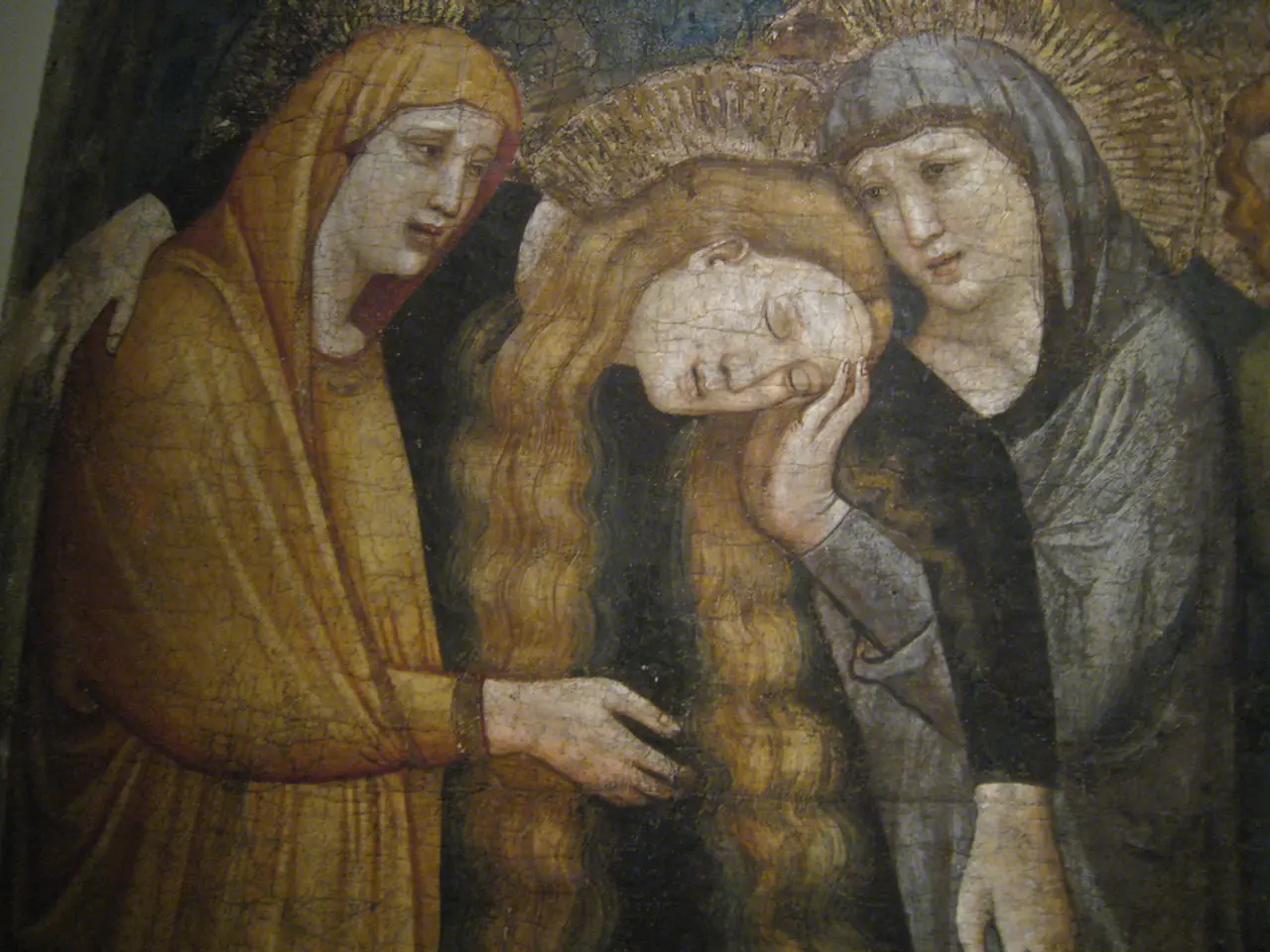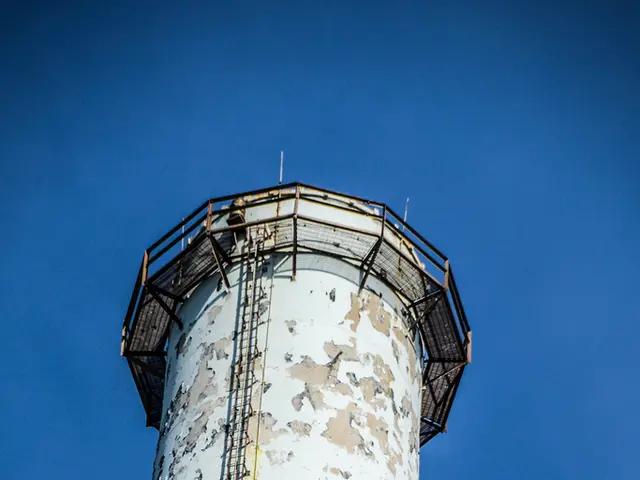Exploring the worth of digital art in the realm of cryptocurrency
In a significant development for the world of digital art, the UK's creative industries have seen a resurgence in the realm of Crypto Art. The market, which first gained wider public attention in 2021 when Christies auctioned a work by digital artist Beeple for $69.3 million, is now characterised by a market recovery and maturation beyond speculative hype.
Established cultural institutions like Sotheby’s are actively incorporating Non-Fungible Tokens (NFTs) into their offerings through curated auctions and Metaverse platforms. The market shows a growing emphasis on quality over quantity, with significant trading volume concentrated on high-value collections such as CryptoPunks, which alone is valued at approximately $2.4 billion. This resurgence is supported by renewed venture capital interest and significant collector activity, including large purchases by "whales" signalling confidence in the space.
For artists, the rise of generative AI and programmable aesthetics is a major development. Platforms like ArtBlocks enable artists to create on-chain artworks with unique, programmable features, blending AI and blockchain to open new avenues for creativity and monetization. Experimental models exploring AI-trained style tokenization and licensing hint at future economic models where artistic styles themselves become marketable assets.
In terms of cultural institutions, crypto art is no longer peripheral but embedded within the ecosystem. Auction houses and museums are increasingly using blockchain to authenticate, auction, and exhibit digital art. Furthermore, collaborations between art market data leaders (like Artprice) and AI platforms (like Perplexity) aim to revolutionize art market intelligence and cultural expertise, signalling a deepening philosophical and educational integration of AI within the cultural sector.
The discussion paper "Crypto Art: A Reference and Guide for Cultural Institutions, Artists, and Researchers" by PEC researchers Dr. Eva Nieto McAvoy and Dr. Jenny Kidd explores key issues in the Crypto Art market and the philosophical questions it raises about aesthetics, value, and morality. The paper, based on one of the first studies to look at the impact of Brexit on the UK creative industries from 2014-2019, is intended as a reference and guide for those interested in this evolving field.
Looking ahead, implications for the future include sustainable growth, expanded institutional adoption, new artist revenue streams, broader NFT applications, and educational and philosophical shifts. As AI-powered mixed subscriptions and market intelligence deepen scholarly engagement with digital art, potential redefinitions of art curation, valuation, and preservation practices may occur.
In summary, crypto art today is a stabilizing and evolving market increasingly embraced by cultural institutions and artists through AI-driven creativity and new business models, with prospects for lasting impact on how art is created, owned, exhibited, and studied in a digital age.
- The UK's creative industries are experiencing a resurgence in the realm of Crypto Art, a development that includes technology and arts.
- Established cultural institutions like Sotheby’s are incorporating Non-Fungible Tokens (NFTs) into their offerings, indicating the maturation of the Crypto Art market beyond speculative hype.
- The rise of generative AI and programmable aesthetics in the Crypto Art market is opening new avenues for creativity and monetization for artists.
- Cultural institutions are increasingly using blockchain to authenticate, auction, and exhibit digital art, signaling a deepening integration of technology within the cultural sector.
- Researchers are exploring key issues in the Crypto Art market and the philosophical questions it raises, offering guidance for those interested in this evolving field.
- The future of Crypto Art may see sustainable growth, expanded institutional adoption, new artist revenue streams, broader NFT applications, and educational and philosophical shifts, potentially redefining art curation, valuation, and preservation practices in a digital age.




